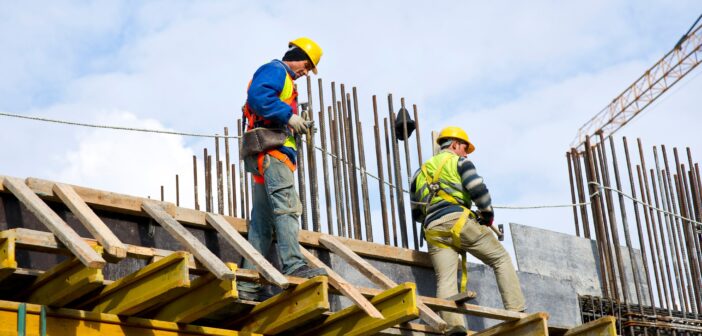Shankar Mishra is a masonry worker at a construction site in Bengaluru. During the peak of the Covid-19, he was one among the thousands of workers who had no other option but to reverse migrate facing all odds. He thought at that point of time that his career as a mason worker was over. However, he had the surprise of his lifetime when the developer’s construction manager called him back and even offered to send a flight ticket for the same. Track2Realty traces the labour condition post the pandemic.
“I had never even imagined flying by air. It was a dream come true. But that is not something to have changed my destiny. Ever since I came back to work, I can feel drastic changes in the working conditions and overall ambience over here. I am now being paid INR 100 extra per day and one-time food at the construction site. The working condition has indeed changed,” says Mishra.
The experience of this masonry worker is not a case in isolation. The real estate sector is conscious of the fact that the pandemic has compounded long-term issues, leading to crisis-level labour shortfalls across the real estate markets of India. The moot point at various industry forums is how to solve the realty’s workforce shortage.
Of course, the developers have taken various measures to put a check on the reverse migration. Some of the developers with projects nearing completion have gone ahead to exhaust the CSR budget for the labour benefit. The question is whether such short-term measures are enough to meet the long-term challenge of labour shortage in the Indian real estate.
The two questions that also need to be assessed are: To what extent the developers have taken the corrective measures to solve the labour problem? How far has the construction workers condition improved post the labour shortage due to Covid?
The sector would like us to believe that a lot has been done for labour welfare since the pandemic. Right from vaccination to food distribution, they have many measures to count. Vaccines were provided to them free of cost, and safety equipment, including masks, were available. Labour camps were sanitized, and oxygen cylinders were kept on standby.
A section of the developers also ensured that they did not have to move around in order to reduce their risk of infection and regularly conducted counselling classes and health initiatives like yoga camps to boost their immunity. These efforts are what helped them retain the workers and also attract more with the passage of time in order to be able to meet today’s workforce requirements.
But the question is to what extent these measures really helped the cause of the sector.
K Satyanarayana, MD, Starworth Infrastructure and Construction asserts that over the past three years, several measures to retain workers have been put in place by developers in order to deal with the labour shortage. Both during and after the worst of the pandemic, workers are being given more facilities and financial assistance in order to continue with their work. During Covid-19, developers carried out several efforts in coordination with the State Government. Food kits, booster kits, and First Aid kits were made available. Monetary benefits under the Building and Other Construction Workers (BOCW) Act of up to INR 5,000 per worker were given.
“As developers/contractors, we ensured the creation of recreation facilities, good ventilation for worker camps, daily fogging operations, and oxygen concentrators at the site. We also tied up with hospitals providing Covid-19 treatment and put up isolation chambers onsite. Regular health check-ups, better living facilities have helped increase the stickiness among workers. The realty sector needs to train a large number of unskilled workers which will draw unemployed youth to construction sites. Upskilling is a big pull factor that also helps in developing a sense of belonging among them, says Satyanarayana.
Sarveshaa SB, Managing Director, BHADRA Group believes this is an ongoing issue and is not easy to resolve instantly. However, addressing the real estate labour deficit will necessitate a concerted effort from all industry stakeholders. The industry needs to prioritise worker welfare, invest in upskilling and training programs, improve working conditions, invest in the use of technology, and collaborate to understand labour related issues a little better. By adopting these measures, the industry will be able to develop a sustainable workforce that can adjust to changing industry demands and contribute to the sector’s growth and development.
“The real estate industry can effectively manage labour scarcity through a variety of strategies. Participating in training and upskilling programmes that enable employees to acquire the necessary skills for the job is one solution. This can assist in attracting additional workers to the industry and fostering a more competent and adaptable workforce. In addition to providing safe and hygienic working conditions, access to medical facilities, and equitable wages, the industry can focus on improving the working conditions of labourers. This can help retain employees and increase their efficiency and productivity,” says Sarveshaa.
The ground reality is that labour issues were growing in real estate even before covid-19, but the pandemic made this challenging situation worse. Most of the industries face labour shortages these days, but in real estate the issue has now reached to a crisis level. Most of the analysts feel that labour and skills shortages would have a big impact on profitability of the developers over the next 10 years. Addressing the challenge will require a mix of sensitivity towards the labours as well as the skill upscaling.
The developers must also look at incentivizing ways in which worker efficiency can be improved and channelized. Regular skill development programs for bar benders, carpenters, masons, and the unskilled workforce is the need of the hour. A Quality Assurance Program is urgently needed where specific training sessions are conducted before starting a particular construction activity which could help get it right the first time with the lowest amount of wastage. If the entire sector takes up these initiatives, the labour shortage problem can be effectively tackled.
Additionally, the industry should prioritise the safety and well-being of its employees. Moreover, collaboration with the government to create policies that support the construction industry and its employees. Managing the labour shortage in the real estate industry necessitates an all-encompassing strategy that prioritises the well-being of employees and invests in adaptable workforce solutions. In sum, more people need to be brought into the mainstream labour force with better incentivised working conditions ensuring safety, well-being and belongingness.
Labour shortfalls in the industry are acute, but with the right approach, the developers are now learning to take big steps toward solving them. The question is whether this is enough?
Ravi Sinha
ravisinha@track2media.com
#RaviTrack2Media
Track2Realty is an independent media group managed by a consortium of journalists. Starting as the first e-newspaper in the Indian real estate sector in 2011, the group has today evolved as a think-tank on the sector with specialized research reports and rating & ranking. We are editorially independent and free from commercial bias and/or influenced by investors or shareholders. Our editorial team has no clash of interest in practicing high quality journalism that is free, frank & fearless.
Subscribe our YouTube Channel @ https://bit.ly/2tDugGl





